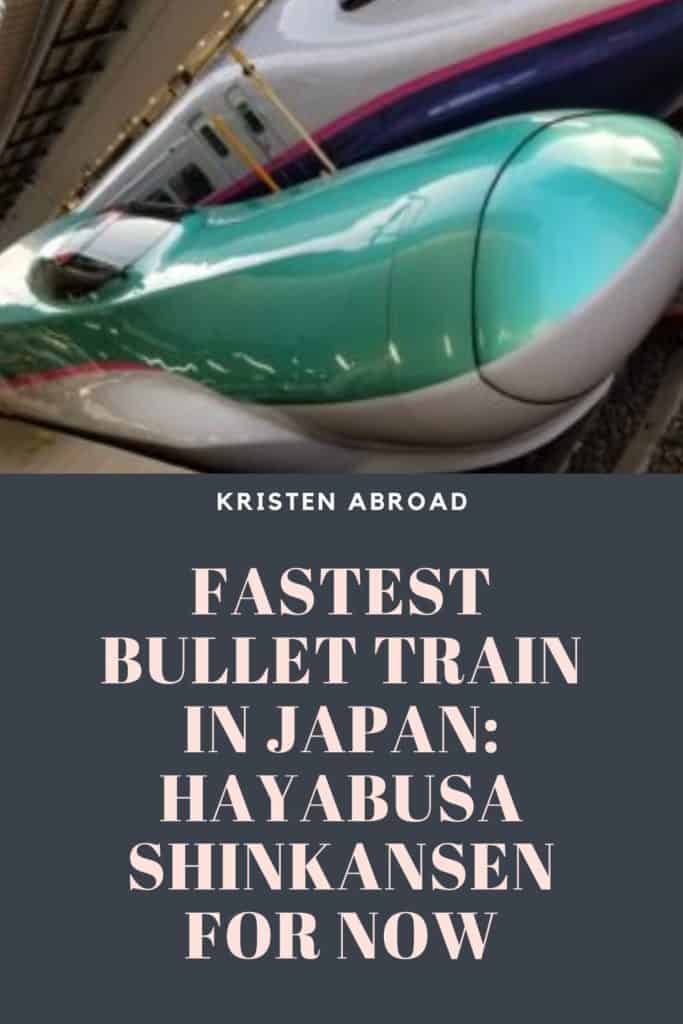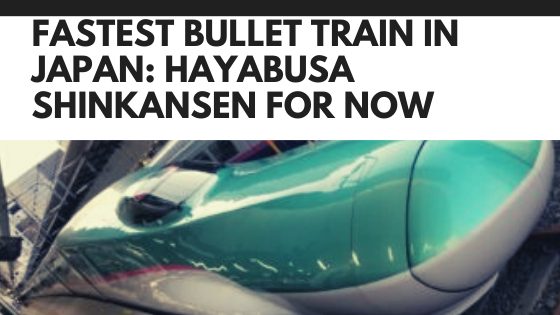The Hayabusa Shinkansen (はやぶさ新幹線) is named after the peregrine falcon. An appropriate name for what is currently the fastest bullet train in Japan. Connecting Tokyo to Shin-Aomori and just recently, Hokkaido, the Tohoku Shinkansen Line is your friend if you are traveling to Aomori.
You’d be hard-pressed to find a cheaper plane ticket. It’s also faster once you factor in getting to the airport, waiting, flying, getting back through baggage, etc. At 320 kph, the Hayabusa shinkansen or bullet train can book it.
- Where does the Tohoku Shinkansen line go?
- Hayabusa Shinkansen vs. Nozomi Shinkansen: Which is faster?
- Is the Hayabusa covered by the JR Rail Pass?
- Tickets for the Hayabusa Shinkansen
- Onboard Seat Options and Amenities
- What is the difference between E5 Series and H5 Series Shinkansens?
- Experiencing All the Trains of Japan
- What will be the next fastest train in Japan?
- Pin this for later
[Editor’s Note: This post was originally published in August of 2018 and has been updated for freshness, accuracy, and comprehensiveness.]
Where does the Tohoku Shinkansen line go?
The Tohoku Shinkansen Line is the longest train line in JR East. Hayabusa is the fastest operating train on it and technically originates in Tokyo and ends at Shin-Aomori station. However, since 2016, the line continues on through the Seiken Tunnel to Shin-Hakodate-Hokuto Station in Hokkaido.
If you want something to add to your Japan bucket list, the Seiken Tunnel should be one of them. While that section of track is technically apart of JR Hokkaido, the Hayabusa which is owned by JR East still covers the route.
Just to make it confusing, JR Hokkaido also has a “Hayabusa” which is basically the same but more on that in a little bit.
If you are exploring the six prefectures of Tohoku (which I’ll be sharing a seven-day itinerary of soon!), between the Tohoku Shinkansen and it’s two branch lines, the Akita Shinkansen and Yamagata Shinkansen you can get to all of the major hubs.

Disclosure: Kristenabroad.com is a participant in the Amazon Services LLC Associates Program and other affiliate programs. For some links to products or services in this article, I may earn a small commission by you using my link. The price for you is not affected.
Hayabusa Shinkansen vs. Nozomi Shinkansen: Which is faster?
I’ve seen many people mistakenly claim the Nozomi is the fastest train in Japan. It. Is. Not. Yes, it is the fastest train if you are heading out to Kyoto, Osaka, or western Honshu, but it’s not the fastest.
The Hayabusa Shinkansen (which technical name is the E5 Series Shinkansen) has been running since 2011 from Tokyo to Shin-Aomori. It debuted at a cool 300 kph speed. In 2013 however, after some analysis and adjustment to the train schedules, this was bumped to the current 320 kph.
While the new N700S (“S” stands for supreme) series debuted for the Nozomi train service in 2020 clocked in at 362 kph during testing, the route from Tokyo to Osaka is capped at 285 kph due to how the track is laid out. If you want to actually experience the fastest speeds in Japan, the Hayabusa Shinkansen E5 series train is the way to go.
Oh, and before you say that’s semantics and the N700S is faster, the E5 series tested up to 400 kph!
But! The purpose of improving on the old N700 was to export the technology, in which they are talking to my home country of America and I wholeheartedly approve of.
Is the Hayabusa covered by the JR Rail Pass?
First of all, if your trip in Japan is only going to be taking place in Tokyo and these Northern Prefectures of Honshu, you can save money by getting the JR East Railpass as opposed to the full country version.
Second, unlike the fastest route between Tokyo and Kyoto, the Nozomi, which isn’t covered by the JR Railpass (it’s a private run train and even if it was covered it crosses JR regions and would need the full rail pass), the Hayabusa is 100% covered by the JR Rail pass!

Tickets for the Hayabusa Shinkansen
Unlike most other Shinkansen trains, there are no open seating (first come, first serve) cars for the Hayabusa Shinkansen. All seats are reserved seats (指定席).
And while the Hayabusa can seat 731 passengers: 18 GranClass, 55 Green Car and 658 in the regular car, they fill up!
If there aren’t seats available, you might be able to get a standing ticket where you can only stand on the ends of the car you are assigned. I say might because they are also limited in quantity.
The standing tickets are only available if the trains completely packed. Trust me, don’t try and hold out to save a little money. One, they will sell out fast and two, standing for 3 hours while this train is barreling down the tracks isn’t the most enjoyable.
As it were, I had my first train snafu because of this train (after over ten years!). I didn’t think about the fact that it may sell out so I just went to Tokyo Station expecting to get a ticket to head up to Aomori. I ended up with a standing-only ticket the next morning.
Which is fine, sometimes you have to go with the flow when traveling, but more stress than necessary. Ended up getting some great food in Ginza.
Bottom line: Get your ticket early for the Hayabusa Shinkansen. I haven’t had an issue since. The other option is that you see if one of the slower trains will get you to your destination.
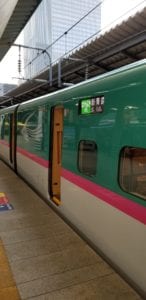
Onboard Seat Options and Amenities
If you want to splurge, this is one of the few trains with a “Gran Class”, a step above normal “business” class Green-tickets,
If you didn’t get a chance to get your 駅弁 (eki-ben, train station bento) at the platform, they do have a service cart that will come around with snacks and beverages. Have a train beer, sit back (the seats recline a bit) and relax.
There is one electric outlet per row. As a heads up, not all JR East trains have WiFi.
What is the difference between E5 Series and H5 Series Shinkansens?
For all intends and purposes, the H5 Series is the same as the E5 Series Shinkansen! Why the different names? H is for JR Hokkaido as best I can tell. The differences themselves are all cosmetic. A different color stripe on the outside, different logo, and slightly different interior design.
Oh, and they both are still referred to as “Hayabusa” and both the E5 and H5 are also used for the “Hayate” route. Slightly slower because it stops in more places. A similar idea to normal trains and especially my local line of Keikyu.
However, in the case of shinkansen, the “slower because it stops in more places” trains actually can be physically slower trains. Why pay for all the bells and whistles when you don’t have to?
So why am I bothering telling you about this? Because Japan has a big train culture and while the difference is small, it is still different.
Experiencing All the Trains of Japan
The longer I’m in Japan, the more I realize that Pokémon are not the only thing that you’ve “gotta catch them all”. There are so many different trains. You’re normal “run of the mill” stuff, sure. What I’m talking about is the fancy liners like the side facing one to Izu peninsula to take advantage of the view, and the special limited liners, and the cat café (it’s a thing! I need to go!) one.
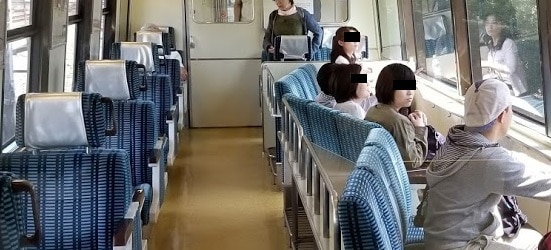
Don’t forget the special painted shinkansen, Hello Kitty and Pikachu. Or the ninja train in Mie. I remember taking “trains to nowhere” when I was little because they aren’t a real mode of transport (very, very sadly) in America. Here you can take cool themed trains and actually go places.
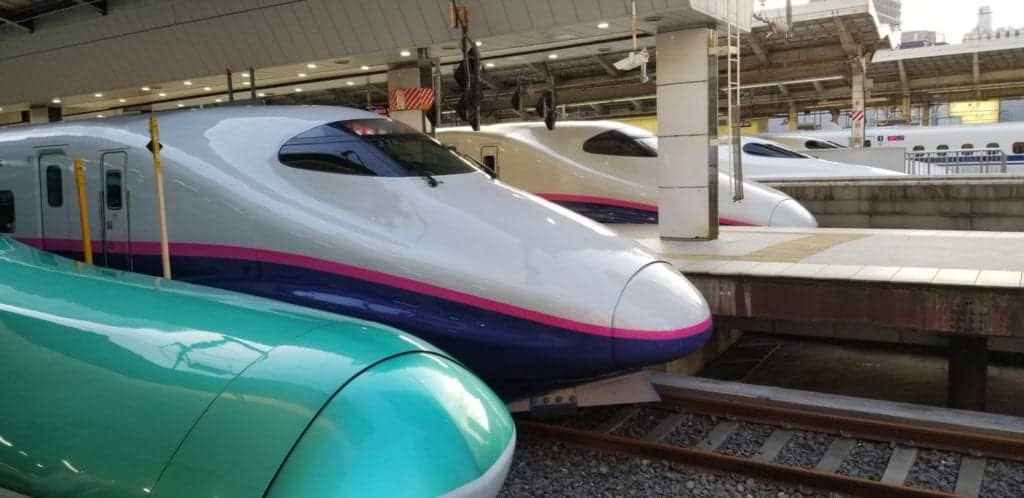
Like there are the stamp books for castles, they also have stamp books for trains.
Or maybe my favorite of a train logbook to mark all the train lines you’ve been on, which of the thousands of stations you’ve been to.
What will be the next fastest train in Japan?
Currently in the middle of three years of testing along the tracks from Sendai to Aomori is the ALFA-X Shinkansen. It will be Japan’s next fastest bullet train with speeds up to 360 kph (about 224 mph if you convert that to English units).
However, you’ve probably heard about the Maglev (magnetic levitation) project JR Central is working on. Which will blow all trains around the world out of the water. It broke the speed record at a blazing 603 kph or just under 375 mph in 2015. The initial route from Tokyo to Nagoya is scheduled to be opened in 2027 and I can’t wait to ride it!
Pin this for later
